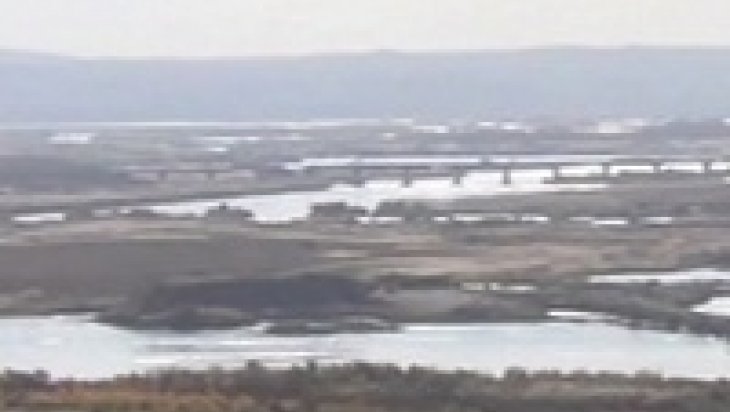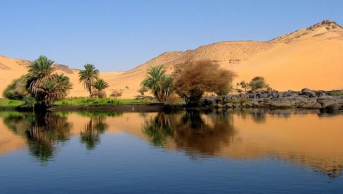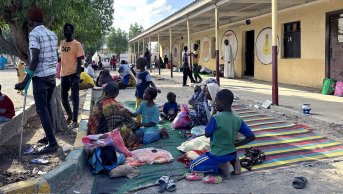War over Tishreen Dam: Growing Signficance of Hydraulic structures in the Middle East

Dams have played increasingly important roles in Iraq and Syria during the last decade or so. First theater of war was the Tabqah Dam, which has become the central stronghold of Daesh.
Second incident was related to Mosul Dam, the biggest in Iraq, when Daesh (ISIS) attacked and invaded the dam site. Now, another strategically located dam, namely Tishreen (Tishrin) has -again- turned into a fighting zone. It will not possibly be the last occasion as the Syrian war appears to continue unfolding.
Tishreen is the last of the three large dams that Syria built on Euphrates, along with Tabqah and Baath Dams, both located further south. Construction works have started in 1991 after it was discovered that Tabqah Dam was not producing enough power as it had been planned initially. Tishreen Dam has been completed in 1999, one year before the death of Hafez Assad. The main purpose of the Tishreen Dam is, therefore, hydropower generation. It supplies most of the electricity of northern Syria. It has a capacity of 630 MW with six turbines. Another strategic feature of the Dam is that it is located north of Tabqah Dam, much closer to Turkey (approximately 50 km). It has become a focal point of warfare between Kurdish-led forces and Daesh in recent years.
Tishreen Dam was under control of Daesh since 2014. A recent offensive led by Kurdish YPG took control of the Dam last week (24-26 december). It has been a critical victory for Kurds aiming to reach western Syria. Despite this, it was reported that a hidden Daesh cell was still active in the Dam site and placed strong explosives within the Dam structure. Increasing water levels in the Tishreen Dam became highly critical if the threat from Daesh is serious. However, it should be noted that, causing a total destruction of a great structure like Tishreen Dam, which has a height of 40 m, need great amounts of really powerful explosives. Several experts have told that such an entire collapse is unlikely. On the other hand, rising water levels in the Dam also prove that allegations about Turkey cutting off water of Eurphrates to Syrian side were unfounded.
It is doubtful that Kurdish victory over Tishreen will be a longlasting one. For the area being very strategic in terms of the connection between east and west Syria, a Daesh attack to retake the lost territories is likely. There were reports that Kurdish forces anvanced into west bank of Euphrates and continue to fight with Daesh there.
American support to Kurdish forces was apparent during all recent campaigns against Daesh. On the other hand, Turkey does not see YPG neither as an ally nor as a part of Syrian opposition to be supported. Turkey is mainly against Kurdish advance in northern Syria, particularly towards west of Euphrates. Under these circumstances, the alienation between Turkey and US seem to grow. However, Americans are becoming more aware of the dangerous possibility that supporting YPG-led forces could be counterproductive in the sense that it may cause further deterioration of the stability in the region, in a much wider inter-state setting.
The story told above points out that controlling water and the energy it produces became highly salient in a region where power itself is very fluid. Lack of stable and effective state control has long made the Dams in Syria and Iraq not only warzones, but also media of fighting. Closure of Tabqah Dam by Daesh was previously a big concern for Iraq, when it put Anbar province into big trouble. Mosul Dam was also a big issue during the Daesh occupation (ended in August 2014), since the Dam was in constant need of reparation due to karstic structures around the reservoir. These incidents also showed that the real threat to water and energy management in Syria and Iraq originates within these countries, and the issue of water releases from Turkey becomes a lesser issue. The main problem is not the amount of water these countries receive, but it is how they are able to manage water resources they already have. Without proper institutions of water management, additional water supply would not going to work. The first and foremost step for a sound water management would be the establishment of a sustainable order in both Syria and Iraq, which currently remains out of sight. External interferences from out-of-region powers also cause a protracting effect to the conflict these countries are experiencing. Eradicating Daesh is a common aim among all NATO allies as well as Russian Federation. But the questions of “how?” and “then what?” are main points of divergence among countries with differentiated agendas. Recent defeat of Daesh is something to be widely applauded in the West, but it may also cause -in the longer term- more trouble than it solves.









